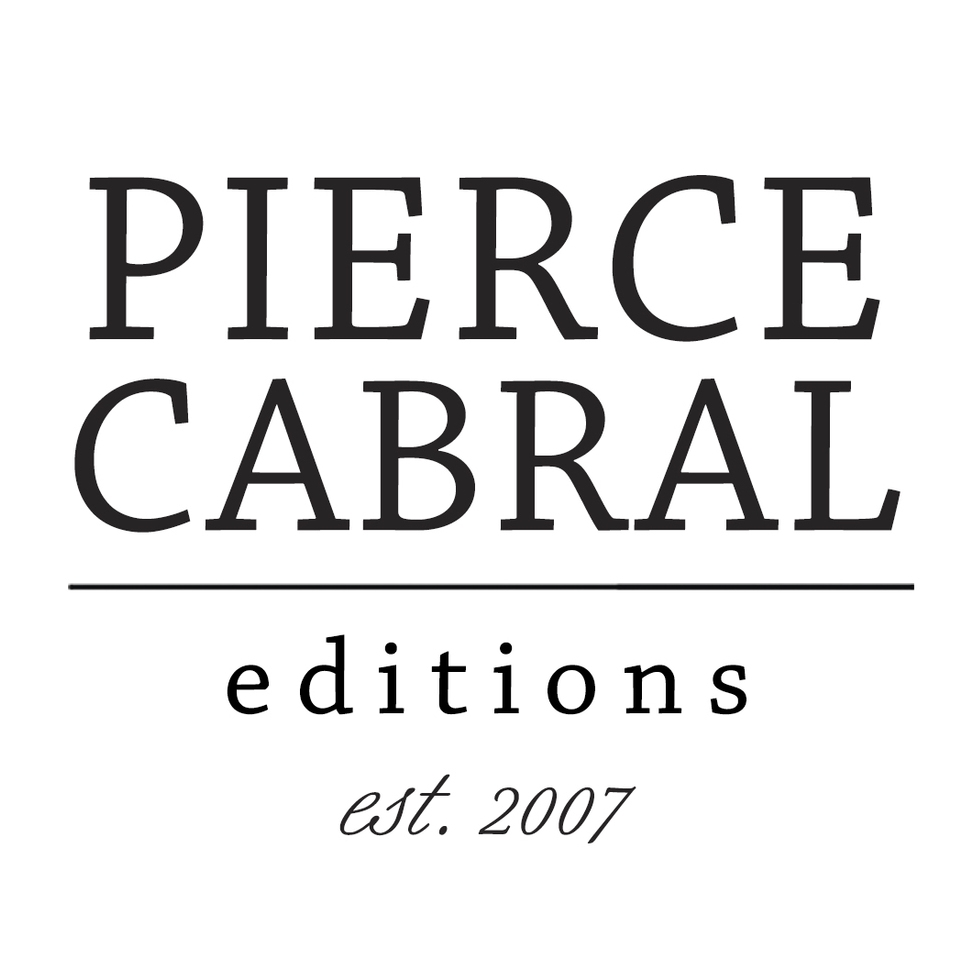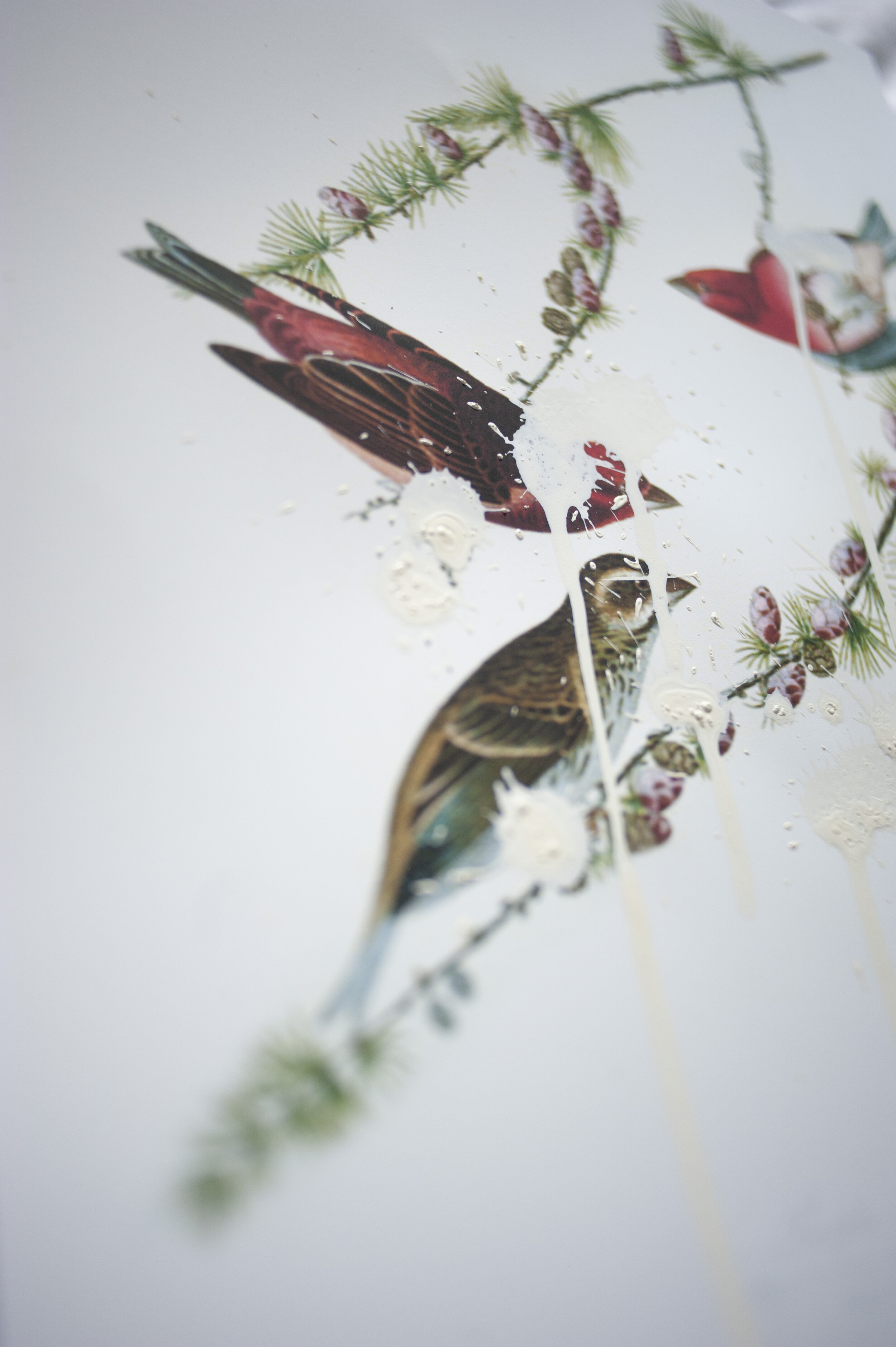These works were installed at Artworks Trenton Visual art Gallery from Aug. 10th to Sep.4th, 2021.
this exhibition and various events including an artist talk, and A sounDscape experience are archived. Unfortunately, the 3d Version of sutured resilience is no longer available.
WHITE STAINS
As we look into our past and present we are finding stains of white privilege and racism throughout our histories. It is in the core of our societies and in ourselves. It is pervasive in the arts and sciences, in our governmental institutions and private corporations.
In this work I am echoing understandings that many are exposing:
“Race is an issue in every aspect of American life, including birding, conservation, nature stewardship, and environmentalism”.
- J.Drew Lanham, PhD.
Using public domain images of the iconic artist John James Audubon as the basis of my work, I provoke others to scrutinize the symbols and legacies we praise, and to look closely at the American culture that has been handed down for generations.
Acknowledging the enormous achievements of Audubon in art and ornithology, must be accompanied by the reckoning of his practices of purchasing, selling and owning other humans. In addition to the perpetration of slavery, Audubon also relied on African Americans and Native Americans for their knowledge of the local fauna in order to execute the epitome of ornithology: “The Birds of America”. People of color were never acknowledge for their contributions. Although I am referring to distorted practices in the field of ornithology these mimic an array of so called “scientific methods” used to legitimize the erroneous concept of the existence of a superior white “race” in the first place.
The reduction to a smaller paper size from the original double-elephant folio prints created by Audubon reflects the diminishing stature in my eyes of scientific methods that view living creatures as specimens and property. This ownership is also extended to the practice of naming birds after individuals and permanently associating species to figures from our distressing colonial past.
Purple finch. 8.5”x11” Pigment print and tempera. (detail of original print)
Cardinal Grosbeak. 8.5”x11” Pigment print and tempera. (detail of original print)
Blue Jay. 8.5”x11” Pigment print and tempera. (detail of original print)
Bird of Washington. 8.5”x11” Pigment print and tempera. (detail of original print)
Where the birds come from? I used content under public domain from the Library of Congress as the basis of my work White Stains. Choosing this source material - color film copy transparencies taken of the pages of the original book - is a reflection of the advances of photographic technology, the wide digitization of collections and the demand for decolonization of narratives that is being fostered in cultural archives and institutions worldwide.
Library of Congress digital reproductions of Audubon’s “The Birds of America”:
Bird of Washington. Library of Congress. (1970, January 1). http://loc.gov/pictures/resource/cph.3b52385/.
Gold finch (#33). Library of Congress. (n.d.). http://loc.gov/pictures/resource/cph.3b52224/.
Cardinal Grosbeak. Library of Congress. (1970, January 1). http://loc.gov/pictures/resource/cph.3b52372/.
Purple Finch; (#4). Library of Congress. (n.d.). http://loc.gov/pictures/resource/cph.3b52221/.
Song Sparrow. Library of Congress. (n.d.). http://loc.gov/pictures/resource/cph.3b52365/.
Blue jay; (#62). Library of Congress. (1970, January 1). http://loc.gov/pictures/resource/cph.3b52230/.
References:
Menakem, R. (2017). My grandmother's hands: Racialized trauma and the pathway to mending our hearts and bodies
Lanham, J. D., Contributor, & 2021, S. (2021, April 23). What Do We Do About John James Audubon?Audubon. https://www.audubon.org/magazine/spring-2021/what-do-we-do-about-john-james-audubon.
Nobles, Gregory, Contributor, (2021, April 12). The Myth of John James Audubon. Audubon. https://www.audubon.org/news/the-myth-john-james-audubon.
Other Digitized Print Materials. Prints by John James Audubon - Digitized Materials (Rare Book and Special Collections Reading Room, Library of Congress). (n.d.). https://www.loc.gov/rr/rarebook/digitalcoll/digitalcoll-audubon.html.
Bird Names For Birds. (n.d.). https://birdnamesforbirds.wordpress.com/.
Matthew R. Halley "Audubon's Bird of Washington: unravelling the fraud that launched The birds of America," Bulletin of the British Ornithologists’ Club, 140(2), 110-141, (22 May 2020)





